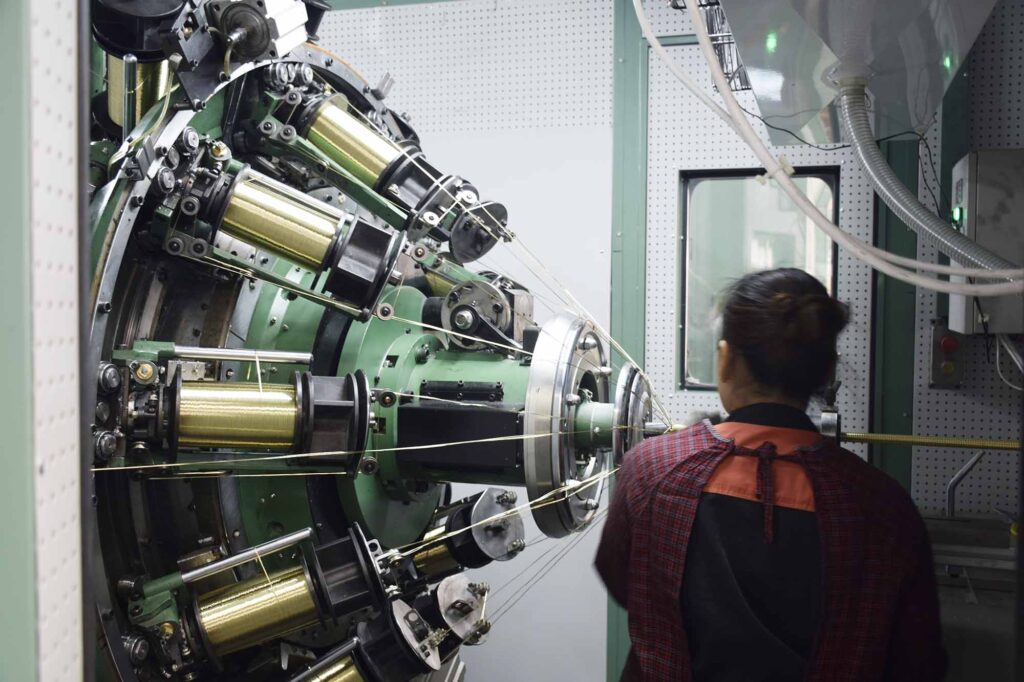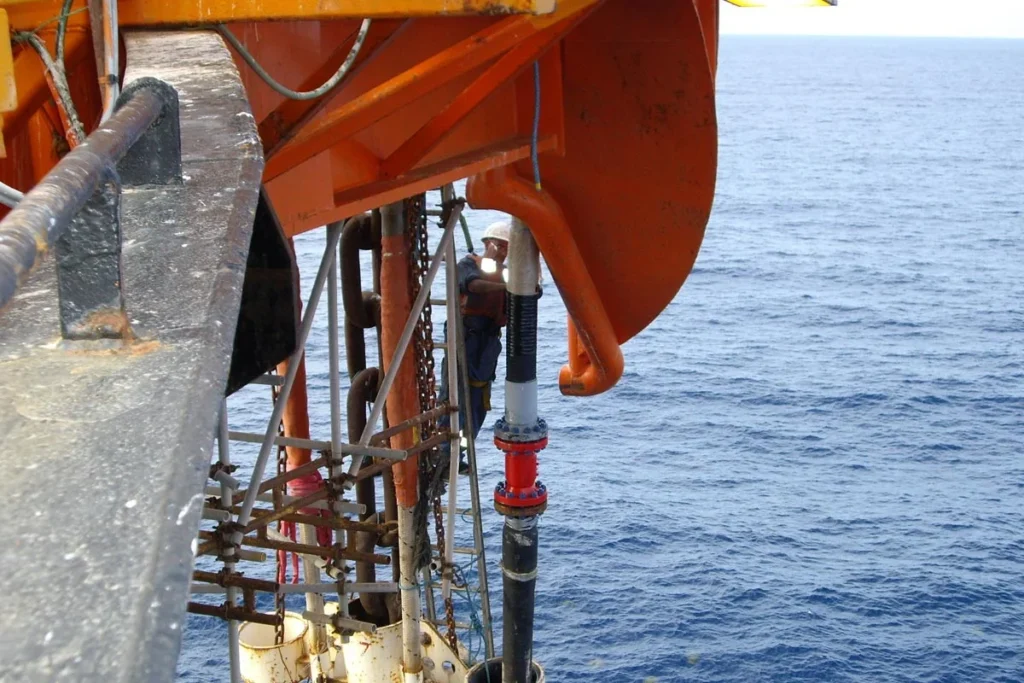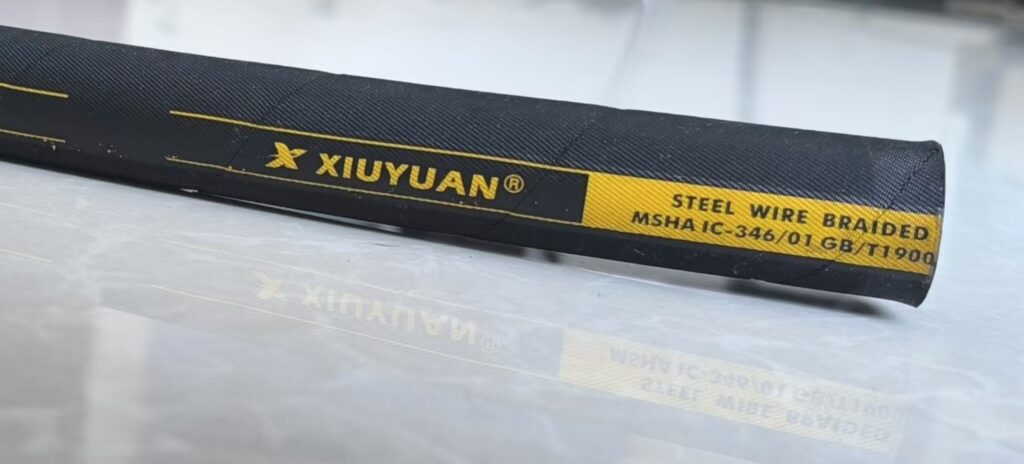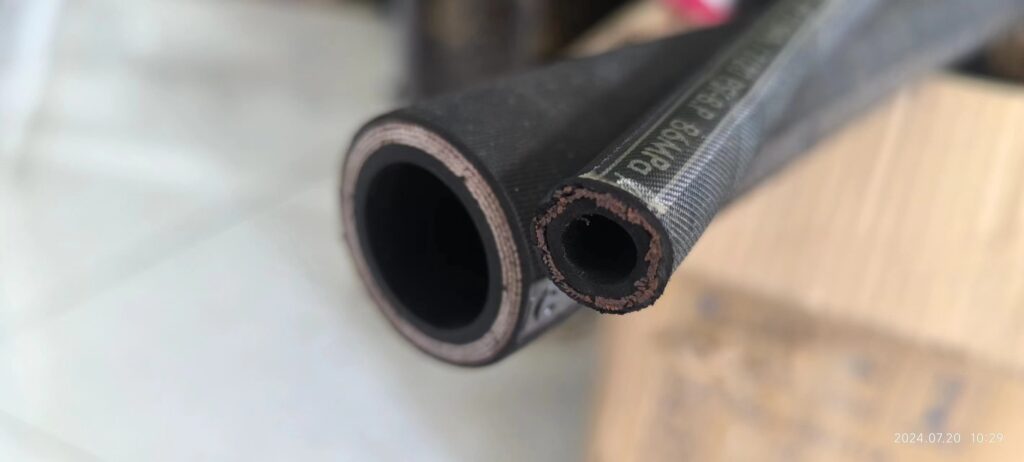Introduction
Cutting hydraulic hoses is a common task in various industries, from automotive repair to industrial machinery maintenance. However, a prevalent issue faced by many professionals is the fraying of wires at the mouth of the hose after cutting. This not only compromises the integrity of the hose but also poses a safety risk. In this blog post, we’ll delve into why wire fraying occurs and provide detailed steps to avoid this problem, ensuring a clean, safe, and professional cut every time.
Understanding Wire Fraying in Hydraulic Hoses
Hydraulic hoses are constructed with multiple layers, including an inner rubber layer, reinforcement wire, and an outer rubber layer. The reinforcement wire, typically made of steel, provides the necessary strength to withstand high pressures. When these hoses are cut, the exposed wires can fray, causing a range of issues.
Why Does Wire Fraying Occur?
- Improper Cutting Tools: Using the wrong tools is one of the most common reasons for wire fraying. Tools not designed for cutting hydraulic hoses can crush or tear the wires instead of making a clean cut.
- Worn-Out Blades: Dull or worn-out blades do not slice cleanly through the hose, leading to uneven cuts and frayed wires. Regular maintenance and replacement of cutting blades are crucial.
- Incorrect Cutting Technique: An improper cutting technique can result in fraying. For instance, applying excessive force or cutting at an incorrect angle can cause the wire to fray.
- High Cutting Speed: Cutting the hose too quickly can generate excessive heat and friction, leading to wire fraying. A steady, controlled cutting speed is essential.
Preventing Wire Fraying: Production Perspective
From the production perspective, ensuring that hydraulic hoses are manufactured to the highest standards is crucial in minimizing wire fraying during cutting. Here are some key considerations:
- Quality Control: Implementing stringent quality control measures during the manufacturing process helps ensure that the reinforcement wires are properly integrated and aligned. Consistent quality control checks can identify potential issues before the hoses reach the end user.
- Material Selection: Selecting high-quality materials for both the rubber layers and the reinforcement wires is essential. The use of superior materials reduces the likelihood of fraying and enhances the overall durability of the hoses.
- Precision Manufacturing: Utilizing advanced manufacturing techniques and precision machinery ensures that the hoses are produced with uniformity. This consistency helps in achieving clean cuts without fraying when the hoses are later cut for application.
- Protective Coatings: Applying protective coatings to the reinforcement wires during the manufacturing process can help reduce friction and prevent fraying when the hoses are cut.
Preventing Wire Fraying: Application Perspective
From the application perspective, there are several steps that technicians and engineers can take to prevent wire fraying when cutting hydraulic hoses:
- Use the Right Tools: Investing in high-quality hydraulic hose cutters is essential. These cutters are specifically designed to handle the reinforced construction of hydraulic hoses. Tools such as hose saws with fine-toothed blades or specialized hydraulic hose cutters provide a clean and precise cut.
- Maintain Sharp Blades: Ensure that the blades of your cutting tools are always sharp. Regularly inspect and replace blades as needed. A sharp blade will make a clean cut through the hose without fraying the wires.
- Proper Cutting Technique: Adopt the correct cutting technique:
- Mark the Hose: Use a marker to clearly indicate where the hose needs to be cut.
- Secure the Hose: Ensure the hose is securely clamped to prevent movement during cutting.
- Cut at the Correct Angle: Position the cutter at a 90-degree angle to the hose for a straight cut. Avoid cutting at an angle as it can cause uneven edges and fraying.
- Control Cutting Speed: Maintain a steady and controlled cutting speed. Avoid rushing the process, as high-speed cutting can lead to excessive heat and friction, which causes fraying. A slower, consistent speed will yield a cleaner cut.
- Deburring and Finishing: After cutting the hose, use a deburring tool to smooth out any rough edges. This step removes any small frayed wires and ensures the hose end is clean and safe for fittings.
Detailed Step-by-Step Guide to Cutting Hydraulic Hoses
Step 1: Gather the Necessary Tools
- High-quality hydraulic hose cutter or fine-toothed hose saw
- Sharp blades
- Marker
- Clamp or vice
- Deburring tool
Step 2: Prepare the Hose
- Inspect the hose for any damage or wear.
- Measure and mark the exact spot where the hose needs to be cut using a marker.
Step 3: Secure the Hose
- Clamp the hose securely in a vice or use a suitable clamping tool. This prevents the hose from moving during the cutting process and ensures a precise cut.
Step 4: Cut the Hose
- Position the cutter at a 90-degree angle to the hose at the marked spot.
- Apply steady pressure and cut through the hose with a controlled, even motion.
- Ensure the blade remains sharp and avoid applying excessive force.
Step 5: Deburr the Hose End
- Use a deburring tool to smooth any rough edges at the cut end of the hose.
- Inspect the cut to ensure there are no frayed wires or uneven edges.
Step 6: Clean the Hose
- Blow out any debris or small particles from the inside of the hose to ensure it is clean and ready for use.
Conclusion
Cutting hydraulic hoses without causing wire fraying is essential for maintaining the integrity and safety of hydraulic systems. By using the right tools, maintaining sharp blades, employing proper cutting techniques, and finishing the cut with a deburring tool, you can achieve clean and professional cuts every time. These steps not only enhance the performance and longevity of the hose but also ensure a safer working environment.
Additional Tips for Maintaining Hydraulic Hoses
- Regular Inspection: Regularly inspect hydraulic hoses for signs of wear, damage, or leaks. Early detection of issues can prevent catastrophic failures.
- Proper Storage: Store hoses in a cool, dry place away from direct sunlight and harsh chemicals. Proper storage extends the life of the hoses.
- Training and Safety: Ensure that all personnel handling hydraulic hoses are adequately trained in cutting techniques and safety procedures. Safety gear such as gloves and eye protection should be worn at all times.
By following these guidelines from both production and application perspectives, you can avoid the common problem of wire fraying and ensure the reliability and efficiency of your hydraulic systems. A little attention to detail goes a long way in maintaining the integrity of your hoses and the overall safety of your operations.





